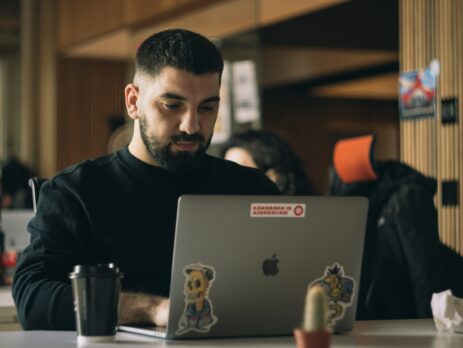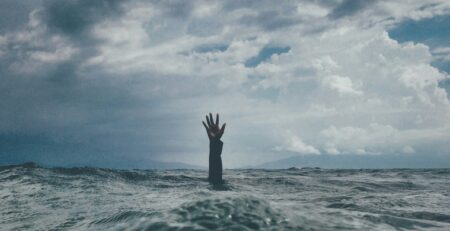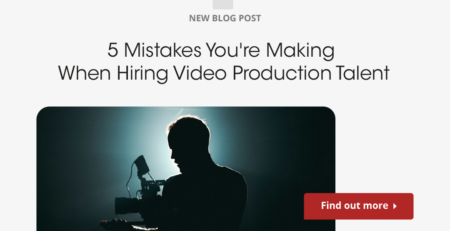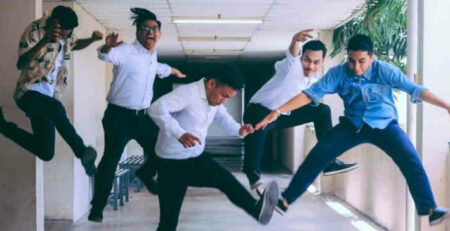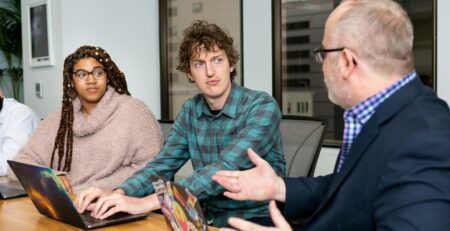Recruitment Revolution: Virtual Reality Designers You Need on Your Team
The landscape of technology and design is evolving rapidly, and at the forefront of this evolution is the burgeoning field of Virtual Reality (VR). As businesses and entertainment sectors increasingly adopt VR, the demand for skilled VR designers is skyrocketing. This shift represents a significant recruitment revolution, where the right talent can dramatically influence a company’s trajectory in the digital realm.
Virtual Reality designers are not just technologists or artists; they are visionaries who can immerse users in a convincingly real experience crafted from code and creativity. The role of a VR designer combines elements of 3D modeling, psychology, user interface design, and storytelling, making it complex and multifaceted.
For companies looking to stay ahead of the curve, understanding the nuances of recruiting top-tier VR talent is crucial. This involves not only identifying the right skill set but also understanding the unique challenges and opportunities that VR presents. The integration of VR into various sectors such as healthcare, education, real estate, and gaming has created a diverse range of opportunities for VR professionals.
However, the process of recruiting VR designers is markedly different from hiring other types of employees. It requires a deep understanding of the technology, a keen eye for creative potential, and an awareness of the specific tools and languages used in VR development. Additionally, because VR is a relatively new field, finding candidates with extensive experience can be challenging.
Companies must also consider the cultural fit and the ability of these designers to collaborate with teams that may not have a background in VR. This includes the ability to communicate complex technical details to non-experts and to think outside the traditional paradigms of user experience and design.
Investing in VR talent is not just about filling a position. It’s about investing in the future of the company. The right VR designer can lead to groundbreaking projects that can redefine a brand and attract significant market attention. Therefore, the recruitment process should also focus on long-term potential and vision alignment between the candidate and the company’s strategic goals.
To aid in this complex recruitment process, companies are increasingly turning to specialized staffing agencies, leveraging advanced recruitment technologies, and adopting innovative interview techniques. These strategies help identify candidates who are not only technically proficient but also possess the creative and visionary thinking needed to excel in VR design.
Moreover, fostering an attractive work environment that encourages innovation and continuous learning is essential for retaining top VR talent. This includes providing opportunities for professional development, access to cutting-edge tools and technologies, and a workplace culture that values creativity and experimentation.
In conclusion, as the demand for immersive and interactive digital experiences grows, so does the need for skilled VR designers. Companies looking to lead in their respective domains must prioritize the recruitment of talented VR professionals. By understanding the unique aspects of hiring in this innovative field, businesses can build teams capable of delivering extraordinary virtual experiences that captivate and engage users.
Most Asked Questions About Recruiting Virtual Reality Designers
- What specific skills should companies look for when hiring a VR designer?
- How can businesses effectively assess the technical abilities of VR candidates during the interview process?
- What are the best practices for integrating a VR designer into an existing team?
- How does the recruitment of VR designers differ from other tech positions?
- What are the challenges in retaining VR talent and how can companies overcome them?
- Can VR design skills be learned on the job, or should candidates possess prior experience?
- What impact does VR design have on a company’s product development and customer engagement?
What Specific Skills Should Companies Look for When Hiring a VR Designer?
When recruiting a Virtual Reality (VR) designer, companies should look for a blend of technical proficiency, creative flair, and a solid understanding of user experience principles. The ideal candidate should possess skills in 3D modeling software such as Autodesk Maya or Blender, proficiency in VR development platforms like Unity or Unreal Engine, and a good grasp of coding languages relevant to VR such as C# or C++.
Additionally, since VR design also involves creating immersive experiences that evoke emotional responses, candidates should have a strong sense of spatial awareness, color theory, and auditory design. Experience with user interface (UI) and user experience (UX) design is also crucial as it directly affects how intuitive and engaging the VR environment is.
Problem-solving skills are essential since VR design often involves unique challenges that require innovative solutions. A good VR designer must be able to troubleshoot technical issues as well as devise creative ways to overcome design obstacles.
Communication skills are also vital. VR projects typically require collaboration across various departments, including developers, artists, and marketing teams. A VR designer must be able to clearly articulate complex ideas and technical details to team members who may not have a background in VR.
Lastly, a passion for VR technology and its potential applications is a significant plus. A designer who is enthusiastic about VR is more likely to stay abreast of the latest developments in the field and be motivated to push the boundaries of what is possible.
In summary, while technical skills form the foundation of a competent VR designer, soft skills and a genuine interest in VR technology are what truly differentiate the great from the good. Companies should strive to identify candidates who not only meet the technical requirements but who are also creative, communicative, and passionate about their work.
How Can Businesses Effectively Assess the Technical Abilities of VR Candidates During the Interview Process?
Assessing the technical abilities of VR candidates during the interview process can be challenging due to the specialized nature of the field. However, businesses can employ several strategies to ensure they are selecting the right candidate for the job. One effective method is to conduct a technical interview that includes practical tasks or problem-solving scenarios specific to VR development.
Companies might also consider requiring candidates to present a portfolio of past VR projects. This allows the interviewer to assess firsthand the candidate’s proficiency with VR tools and technologies, as well as their ability to create engaging and immersive experiences.
Another approach is to use standardized testing tools that measure specific VR-related skills, such as coding proficiency, 3D modeling capabilities, or knowledge of VR platforms like Unity or Unreal Engine. These tests can provide a quantitative measure of a candidate’s abilities and help compare different candidates more objectively.
It can also be beneficial to involve current VR team members in the interview process. They can provide valuable insights into the technical requirements of the role and assess whether the candidate’s skills align with the team’s needs.
Additionally, businesses should not overlook the importance of soft skills, such as problem-solving, creativity, and communication, which are crucial for success in VR design. Behavioral interview questions can help evaluate these skills and determine how the candidate handles various scenarios they might encounter in the role.
Ultimately, a combination of technical assessments, practical demonstrations, and thorough interviewing techniques will provide the most comprehensive understanding of a VR candidate’s abilities. By carefully evaluating both hard and soft skills, businesses can make informed decisions and select candidates who will thrive in VR design roles.

What Are the Best Practices for Integrating a VR Designer into an Existing Team?
Integrating a VR designer into an existing team involves several best practices to ensure smooth collaboration and optimal use of the designer’s skills. First, it is crucial to provide a comprehensive onboarding process that includes detailed information about the company’s current projects, tools, and processes. This helps the new designer understand the workflow and how their role fits into the larger picture.
It is also important to foster a culture of open communication and collaboration. Encouraging regular meetings and discussions not only helps the VR designer to feel more connected with the team but also stimulates the exchange of ideas and feedback that can lead to better outcomes.
Providing access to the latest tools and technologies is another key practice. VR design is a rapidly evolving field, and having the right software and hardware can significantly affect the quality and efficiency of the designer’s work.
Mentorship programs can be beneficial as well. Pairing the VR designer with a more experienced team member can facilitate knowledge transfer and faster acclimatization to the company’s methods and expectations.
Lastly, it is important to recognize and accommodate the unique needs of VR projects. This might involve adjusting project timelines, budgets, and resources to account for the complexity and experimental nature of VR development.
By implementing these best practices, companies can ensure that VR designers are effectively integrated into their teams, leading to enhanced collaboration, innovation, and productivity in VR projects.
How Does the Recruitment of VR Designers Differ from Other Tech Positions?
The recruitment of VR designers differs from other tech positions in several key ways. Firstly, the skill set required for VR design is highly specialized, combining elements of 3D modeling, computer programming, graphic design, and user experience. This necessitates a more focused search for candidates who possess a unique blend of artistic and technical skills.
Additionally, the VR industry is relatively new and rapidly evolving, which means that the pool of experienced candidates is smaller than in more established tech fields. This can make it challenging for recruiters to find candidates who have both the necessary skills and a proven track record in VR design.
Another difference is the importance of a portfolio in the VR hiring process. Unlike many other tech roles, where experience and certifications might be enough to secure a position, VR designers are often expected to provide a strong portfolio that showcases their ability to create immersive and engaging experiences.
The interview process for VR designers also tends to be more project-focused. Candidates may be asked to participate in hands-on demonstrations or to discuss specific VR projects they have worked on, which requires a deeper understanding of the technology and creative process involved in VR development.
Finally, because VR is such a cutting-edge field, companies often look for candidates who are not only skilled but also passionate about VR technology and its potential applications. This can add another layer to the recruitment process, as companies seek to identify candidates who are likely to remain committed to the field and drive innovation within the company.
Understanding these differences can help recruiters and hiring managers tailor their approach to attract and retain the best VR talent, ensuring their company remains at the forefront of this exciting and dynamic field.
What Are the Challenges in Retaining VR Talent and How Can Companies Overcome Them?
Retaining VR talent poses unique challenges due to the competitive nature of the field and the high demand for skilled professionals. One of the main challenges is the tendency for VR professionals to seek opportunities that allow them to work on cutting-edge projects. To retain top talent, companies need to ensure that they are providing engaging and innovative work that pushes the boundaries of what is possible in VR.
Another challenge is the rapid pace of technological change in VR. Professionals in this field are often eager to work with the latest tools and technologies, and if a company does not keep up with technological advancements, it risks losing its best employees to competitors that do.
Compensation is also a key factor in retaining VR talent. As the demand for these skills increases, so does the potential for higher salaries elsewhere. Companies must ensure that their compensation packages are competitive and commensurate with the specialized skills that VR professionals bring to the table.
Professional development opportunities are crucial as well. VR professionals tend to be highly driven by personal and professional growth. Companies can retain their VR talent by investing in continuous learning and development programs that help these professionals advance their skills and careers.
Lastly, creating a supportive work environment that values creativity and innovation can help retain VR talent. This includes fostering a company culture that encourages experimentation and risk-taking, without the fear of failure.
By addressing these challenges through strategic initiatives and a supportive work environment, companies can not only retain their VR talent but also attract new professionals eager to work in a dynamic and forward-thinking setting.

Can VR Design Skills Be Learned on the Job, or Should Candidates Possess Prior Experience?
While it is possible for some VR design skills to be learned on the job, having prior experience can significantly accelerate a candidate’s productivity and impact. VR design involves a complex set of skills that are best developed through dedicated study and practice.
However, for companies willing to invest in training, it is feasible to hire candidates with a foundational skill set in related fields such as 3D animation, software development, or graphic design, and provide them with specific VR training. This approach can be particularly effective in markets where VR experience is scarce.
On-the-job training for VR design should be structured and comprehensive, covering not only technical skills but also the theoretical aspects of VR, such as user psychology and immersive storytelling. Companies might consider partnerships with educational institutions or specialized VR training programs to facilitate this learning.
Ultimately, whether a company should hire experienced VR designers or train candidates on the job depends on several factors, including the complexity of the VR projects, the availability of experienced candidates, and the company’s capacity to provide effective training. A balanced approach that combines hiring some experienced VR designers with training promising candidates in-house can often yield the best results.
What Impact Does VR Design Have on a Company’s Product Development and Customer Engagement?
VR design can have a profound impact on a company’s product development and customer engagement. By creating immersive and interactive experiences, VR can transform traditional product demonstrations into engaging narratives that capture the imagination of customers.
In sectors such as real estate and tourism, VR can offer potential customers a virtual tour of properties or destinations, providing a much richer experience than photos or videos could. This can lead to higher engagement rates and increased customer satisfaction.
For product development, VR can be used to prototype and test new products in a virtual environment, significantly reducing the time and cost associated with physical prototyping. This can accelerate the development process and allow for more iterative testing and refinement.
VR also offers unique opportunities for customer interaction and feedback. Companies can use VR to create interactive user experiences that not only entertain but also gather valuable data on user preferences and behavior. This information can be used to tailor products and services more closely to customer needs.
Furthermore, VR can enhance brand perception by positioning a company as a leader in innovation. This can attract not only customers but also top talent who are eager to work with cutting-edge technologies.
In summary, VR design can significantly enhance product development and customer engagement by providing immersive and interactive experiences that differentiate a company from its competitors. By investing in VR capabilities, companies can not only improve their product offerings but also enhance their market position.
Conclusion
The recruitment and retention of VR designers are critical to leveraging the transformative potential of virtual reality technology. As the demand for immersive and interactive digital experiences grows, companies must focus on attracting skilled VR professionals who can bring these experiences to life. This involves understanding the unique skills required for VR design, implementing effective recruitment strategies, and fostering a work environment that encourages innovation and growth.
By addressing the challenges associated with VR talent management, companies can build a competitive edge in a rapidly evolving market. This includes offering competitive compensation, opportunities for professional development, and the chance to work on cutting-edge projects that push the boundaries of what is possible in digital design.
Furthermore, the impact of VR on product development and customer engagement cannot be overstated. Companies that successfully integrate VR capabilities into their product development processes can enhance their product offerings, improve customer satisfaction, and accelerate growth.
Ultimately, the future of VR in business depends on the ability of companies to not only understand the technology but also to effectively integrate skilled VR designers into their teams. With the right talent and strategies in place, companies can harness the power of VR to create extraordinary experiences that captivate and engage users around the world.
As the VR landscape continues to evolve, staying informed and adaptable will be key to success. Companies that invest in their VR capabilities and talent will be well-positioned to lead in the digital age, driving innovation and capturing the imaginations of customers worldwide.
In today’s competitive market, finding the right creative and marketing expert can be a challenge. But with icreatives, you’re in experienced hands. With 37 years in staffing and a track record of matching more than 10,000 employees to over 1,000 companies worldwide, we know how to connect you with the best. Plus, you only pay if you hire—there’s no risk, only results.
Ready to find your perfect creative or marketing expert? HIRE WITH ICREATIVES today!

